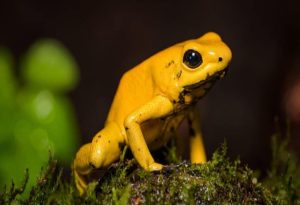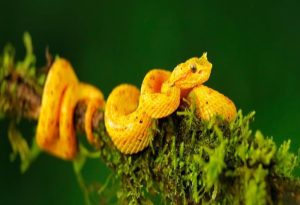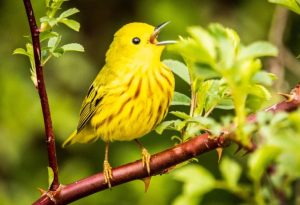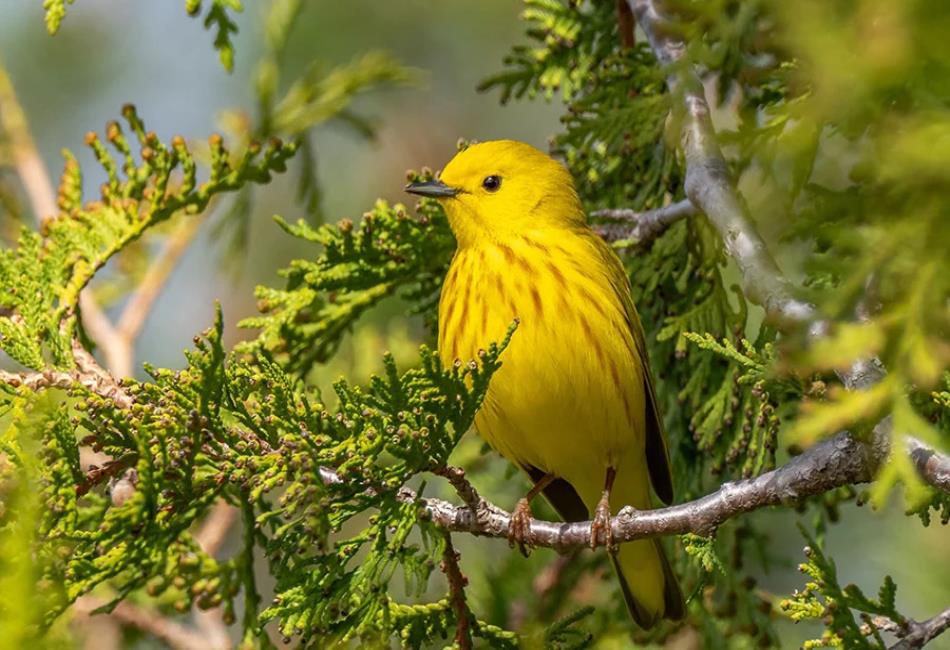Brilliant in Yellow: A Colorful Exploration of Yellow Animals in the Wild
Introduction
In the animal kingdom, color often serves as more than just decoration—it’s a tool for survival, communication, camouflage, and even intimidation. Among the many hues, yellow stands out as one of the most vibrant and intriguing. Found in creatures big and small, from birds and insects to reptiles and marine life, yellow often signals warning, warmth, or wonder. This article explores a wide range of yellow animals, examining their habitats, adaptations, and the evolutionary significance of their sun-kissed shades.

1. The Role of Yellow in Nature
Yellow in animals can serve multiple purposes:
-
Camouflage: In desert or sun-dappled environments, yellow can help animals blend into dry grasses or sandy backgrounds.
-
Warning Coloration (Aposematism): Bright yellow can signal danger or toxicity to predators, especially in insects and amphibians.
-
Mate Attraction: Vivid colors, including yellow, are often used in mating displays to attract partners.
-
Thermoregulation: Lighter colors can reflect sunlight and help some species maintain their body temperature.
2. Notable Yellow Animals Around the World
a. American Goldfinch
A symbol of summer in North America, the American Goldfinch boasts a bright yellow body with contrasting black wings and cap during the breeding season. Males are more vibrant than females, using their coloration to attract mates. These finches are often found in open meadows, gardens, and fields, feeding on seeds from plants like thistles and sunflowers.
b. Yellow Tang
Native to coral reefs in the Pacific Ocean, especially around Hawaii, the Yellow Tang is a favorite among aquarium enthusiasts. These fish are bright yellow and help keep coral reefs healthy by feeding on algae. Their coloration also serves as a form of camouflage among coral and sunlit waters.
c. Golden Poison Dart Frog
Found in the rainforests of Colombia, the Golden Poison Dart Frog is as dangerous as it is beautiful. Its bright yellow skin warns predators of its toxic nature. Just one frog carries enough poison to kill several humans, making it one of the most poisonous animals on Earth. The vibrant yellow serves a critical survival function through aposematism.
d. Banana Slug
Banana slugs are a striking example of yellow among mollusks. Found primarily along the Pacific Northwest of the United States, these large, slow-moving creatures often appear in moist forest environments. Their color helps them blend in with fallen leaves and decaying plant material, although they can also be spotted in green or brown hues.
e. Yellow Seahorse (Hippocampus kuda)
Also known as the common seahorse, this yellow variety is often found in Southeast Asian waters. These creatures use their coloration to hide among coral, sponges, and seaweed. Male seahorses carry and birth the young, a rare trait in the animal world.
3. Insects in Yellow
Insects showcase some of the most vivid yellows in the animal kingdom. Their coloration often serves defensive or reproductive purposes.
a. Monarch Butterfly Caterpillar
Before turning into the iconic orange butterfly, Monarch caterpillars sport alternating stripes of yellow, black, and white. These bright colors warn predators that they are toxic due to their milkweed diet.
b. Asian Giant Hornet
Sometimes referred to as the “murder hornet,” this massive insect has a yellow-orange head and black-striped body. Its coloration serves as a warning to predators. It’s a formidable species, especially feared by honeybee colonies due to its aggressive nature.
c. Ladybug (Yellow Variant)
While most people associate ladybugs with red, some species come in yellow, often with black spots. These beetles also employ aposematism, using their bright colors to warn of their bitter taste and toxic chemical defenses.

4. Reptiles and Amphibians in Yellow
a. Albino Burmese Python
Albino Burmese pythons often display a pale yellow hue over their white skin due to lack of melanin. Though not naturally camouflaged, their appearance makes them highly sought-after in the exotic pet trade. These snakes can grow to over 20 feet in length and are native to Southeast Asia.
b. Yellow-Bellied Sea Snake
One of the few truly pelagic snakes, the yellow-bellied sea snake is found throughout the warm waters of the Indian and Pacific Oceans. It uses its black upper body and yellow belly for counter-shading—making it harder to spot from above or below in the ocean.
5. Birds That Wear Yellow Proudly
a. Yellow Warbler
Widespread across the Americas, the Yellow Warbler is small but dazzling. Males display a solid yellow body with light red streaks on the chest during the breeding season. They thrive in wetlands, marshes, and near water bodies.
b. Eurasian Golden Oriole
Native to Europe and parts of Asia, this bird is a brilliant yellow with black wings and tail. It’s a summer visitor in temperate zones, migrating to Africa during the colder months. Its song is melodic and flute-like, adding charm to its already dazzling appearance.
6. Yellow in Mammals: A Rare Trait
Yellow is relatively uncommon in mammals, but there are a few species where it’s evident in coat coloration:
a. Golden Lion Tamarin
Found in the rainforests of Brazil, the golden lion tamarin sports a yellow-orange mane reminiscent of a lion’s. This critically endangered primate is known for its vibrant coat and social nature. Conservation programs have helped boost its population through captive breeding and reintroduction.
b. Cheeky Yellow-Coated Domestic Cats
While not wild, certain domestic cats, especially orange tabbies, exhibit shades close to yellow. Their coat patterns and colors are the result of selective breeding and genetic inheritance, bringing brightness to households around the world.
7. Symbolism and Cultural Significance
Yellow animals often appear in cultural stories, art, and symbolism. For instance:
-
In many cultures, yellow birds represent joy, hope, and enlightenment.
-
Yellow butterflies are sometimes believed to bring good luck or signify a transformation.
-
Some mythologies use yellow animals as messengers or omens, depending on the region and species.
Conclusion
From forest floors and ocean reefs to backyards and skies, yellow animals brighten our world with their dazzling hues and ecological roles. Whether their coloration serves as a warning, a disguise, or a mating signal, these vibrant creatures remind us of nature’s extraordinary diversity and adaptability. The next time you spot a yellow animal, take a moment to appreciate not just its beauty but the evolutionary story it tells—a tale painted in the sunshine of survival.

FAQ: Brilliant in Yellow: A Colorful Exploration of Yellow Animals in the Wild
Q1: Why are some animals yellow?
Yellow can serve various purposes in the wild, including camouflage, attracting mates, warning predators of toxicity, or reflecting sunlight for thermoregulation.
Q2: Are yellow animals rare?
Not necessarily. While yellow is less common in mammals, it’s frequently found in birds, insects, reptiles, and marine species.
Q3: What is an example of a toxic yellow animal?
The Golden Poison Dart Frog is a well-known example, using its bright yellow skin to warn predators of its deadly toxins.
Q4: Which yellow animals are popular in home aquariums?
The Yellow Tang and certain yellow seahorses are favorites in saltwater aquariums due to their vivid coloration and peaceful nature.
Q5: Are all yellow animals naturally yellow?
Some animals, like albino Burmese pythons or selectively bred domestic cats, appear yellow due to genetic mutations or breeding, not natural pigmentation.
Q6: Do yellow birds use their color for mating?
Yes. For example, the American Goldfinch and Yellow Warbler use their bright plumage to attract mates during the breeding season.
Q7: Can yellow coloration help animals hide?
Yes, in dry or grassy environments, yellow can serve as effective camouflage against predators.
Q8: Are there any conservation concerns with yellow animals?
Yes, species like the Golden Lion Tamarin are endangered due to habitat loss and are part of active conservation efforts.
Q9: What role does yellow play in insects?
Insects like Monarch caterpillars and some yellow ladybugs use the color as a warning of toxicity or unpleasant taste.
Q10: Why is yellow significant in cultural symbolism?
Yellow animals often symbolize joy, transformation, or spiritual messages in various cultures and mythologies.







